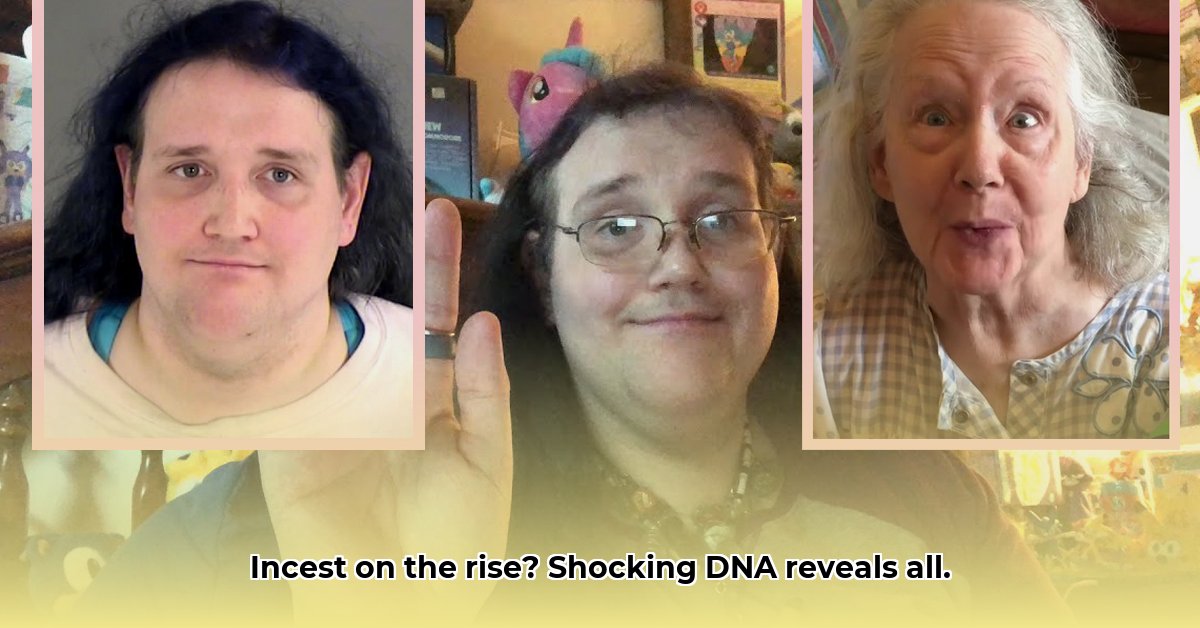
Actualincest: A Hidden Problem Revealed by DNA Tests
The rise of at-home DNA testing has unexpectedly illuminated a dark corner of society: incest. For years, estimates of incestuous relationships were based on limited data, suggesting a remarkably low prevalence. However, the accessibility and anonymity of direct-to-consumer genetic tests have revealed a far higher incidence than previously imagined. This unforeseen consequence challenges our understanding of family structures, legal frameworks, and the ethical implications of genetic information. This article explores the implications of this revelation, examining the increased detection rates, the associated genetic health risks, the diverse legal responses across jurisdictions, the complex ethical considerations, and potential actionable steps forward.
The Shocking Rise in Discovered Cases
While precise figures remain elusive due to the clandestine nature of incest, data suggests a significant discrepancy between past estimates and current findings. Studies using at-home DNA test results indicate a much higher frequency of incestuous relationships than previously assumed. This isn't necessarily because incest itself has increased; rather, DNA testing has made previously hidden realities visible. The ease and privacy afforded by these tests have empowered individuals to uncover family secrets, some of which are profoundly disturbing. This increase in detected cases highlights a previously underestimated societal problem. What were once hidden family secrets are now increasingly brought to light. How can we address this emerging public health issue?
The Hidden Health Risks: Why Incest Is So Dangerous
The primary concern surrounding incest is the significantly increased risk of genetic disorders in offspring. Closely related individuals share a greater proportion of their genes, substantially increasing the likelihood of inheriting two copies of a recessive gene—one from each parent. These recessive genes, typically masked in a diverse gene pool, can lead to a range of serious health conditions, including blindness, deafness, intellectual disabilities, and various developmental disorders. These aren't theoretical possibilities; they are harsh realities for many families. The long-term health consequences extend beyond childhood, impacting individuals across their lifespans.
"The risks of genetic disorders in offspring of incestuous relationships are significantly higher than in unrelated couples due to the increased probability of inheriting two copies of a recessive gene," explains Dr. Eleanor Vance, a leading geneticist at the National Institute of Health. "These disorders can have devastating consequences for affected individuals and families."
A Legal Maze: Inconsistent Laws and Conflicting Views
The legal landscape surrounding incest varies dramatically across jurisdictions. Some countries maintain strict prohibitions, regardless of adult consent, whereas others have no specific laws addressing consensual adult incest. Even within nations like the United States, legal approaches differ significantly, resulting in inconsistent penalties. This lack of uniformity hinders effective prevention and prosecution, highlighting the urgent need for international legal harmonization. This inconsistent legal background makes tackling incestuous relationships challenging and necessitates a clear and unified international approach.
The Ethical Tightrope: Navigating Complex Moral Issues
The discovery of incest via DNA testing presents profound ethical dilemmas. Questions surrounding privacy, family dynamics, and the emotional impact on those involved need careful consideration. Moreover, the concept of informed consent becomes extraordinarily complex, especially where minors are involved. Power dynamics and potential coercion significantly influence the ethical considerations. The issue is further complicated by cases of fertility fraud, where deception adds another layer of distress and moral outrage.
Moving Forward: A Collaborative Approach
Addressing the issue of incest requires a multifaceted approach involving several key players:
DNA Testing Companies: These companies must implement stricter guidelines regarding the handling and disclosure of potentially sensitive genetic information. Proactive measures to educate users about the implications of their results are crucial. Further research into the ethical and privacy challenges presented by these tests is also needed.
Healthcare Professionals: Healthcare providers require specialized training to recognize the genetic risks associated with incest and to provide appropriate support to affected families. They are often the first point of contact for individuals grappling with this complex issue.
Lawmakers: Governments should review and harmonize incest laws, ensuring consistent legal protections, particularly for minors. International cooperation in establishing a unified legal framework is essential.
Public Health Organizations: Public awareness campaigns are vital to educate the public about the genetic and psychological risks associated with incest, promoting responsible use of DNA testing services. Increased funding for relevant research is crucial to grasp the full scope of this complex issue.
A leading public health official states, "It is imperative that we approach this issue with sensitivity and a commitment to support those affected, while simultaneously enacting clear legal guidelines and implementing effective prevention measures."
Conclusion: A Call for Change
The increased detection of incest cases, largely facilitated by at-home DNA testing, exposes a previously underestimated societal problem. It's imperative to move beyond silence and inadequate responses. Open dialogue, improved legal frameworks, and widespread public awareness are vital to protect those at risk, support those affected, and prevent future harm. The challenge is significant, but the need for urgent action is undeniable.